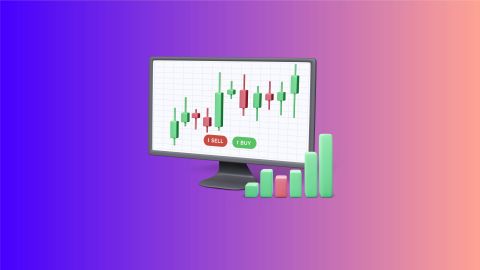Dividend Per Share (DPS) is an important term for anyone investing in stocks. It tells you how much money you can earn from each share you own, apart from the gains from rising share prices. DPS helps investors understand the income they may receive regularly from a company. In this article, we will explain what DPS means, how it is calculated, different ways companies pay dividends, and the types of dividends you may come across.
What is the dividend per share
Dividend per share is the percentage of a company's earnings distributed to each outstanding share of common stock. Essentially, it is the amount of money paid to shareholders for each share they possess. Calculating DPS is important for investors because it provides a clear picture of the profits generated by their assets.
Dividends allow firms to share their profits with shareholders. Dividends are paid out to shareholders to reward them for their investment.
Dividend per share formula and calculation
The dividend per share is calculated using a simple method. To calculate DPS, divide the entire number of dividends paid by the company by the total number of shares held.
Dividend per share (DPS) = Annualised dividend ÷ Number of shares outstanding
The annualised dividend is the total amount of dividends given out during the year. If the organisation distributes dividends quarterly, multiply the quarterly dividend amount by four to calculate the annualised dividend.
Annualised dividend = Quarterly dividend amount × 4
The number of shares outstanding represents the total number of shares issued by the firm. It is critical to include any potentially dilutive securities and calculate them using the average number of shares outstanding for the year.
Weighted average of shares outstanding = (Beginning shares outstanding + Ending shares outstanding) ÷ 2
Using these formulas, you can calculate the dividend per share, providing useful information to shareholders.
Dividend method
There are two primary ways of calculating the dividend per share:
- Common dividend per share formula: This technique is quick and easy, and it includes the direct application of the DPS formula with easily available dividend and share data.
- Earnings per share (EPS) method: The EPS technique requires knowledge about the organisation's net income to compute EPS and the dividend payment ratio. This strategy is used when specific financial information, such as net income, is available.
Regardless of the method used, the dividend per share stays unchanged.
Types of dividends
Dividends are not necessarily paid out in cash; they can take a variety of forms:
- Property dividend: Companies may pay dividends in the form of property, plant, or equipment rather than cash. This might be useful when a corporation wishes to reward shareholders while preserving its financial reserves.
- Liquidating dividends: When a corporation liquidates its assets, the funds are distributed to shareholders. When a firm is about to close its doors, it is common to pay liquidating dividends.
- Cash dividends: The most prevalent type of dividend is a monetary payout to shareholders. Cash dividends are usually handed out quarterly or yearly.
- Scrip dividends: Shareholders receive a promise from the corporation to pay dividends in the future, usually in the form of extra shares. Scrip dividends are advantageous for companies looking to maintain their cash reserves.
Calculating DPS from the income statement
Estimating a dividend per share using the revenue statement includes multiple steps:
- Determine the company's net profit: This is normally shown at the bottom of the income statement. Net profit is the company's net earnings after subtracting all costs.
- Identify the number of outstanding shares: This information is often included in the balance sheet. Outstanding shares are the total number of shares issued by the firm.
- Calculate the earnings per share: EPS is determined by dividing a firm's net income by its total number of outstanding shares. It denotes the fraction of the firm's earnings allocated to each share of common stock.
- Estimate the average payout ratio: The payout ratio is the percentage of earnings that a firm distributes to its shareholders in the form of dividends. It may be calculated by analysing the company's dividend payments over time.
- Calculate the dividend per share: Finally, multiply the payout percentage by the EPS to arrive at the dividend per share.
Dividend per share calculation example
Let us assume that a company declared a quarterly dividend of Rs. 50 lakh, and there were no plans to reduce the dividend in the near future.
To determine the annualised dividend amount, multiply the quarterly dividend by four.
Annual dividend amount = Rs. 50 lakh x 4 = Rs. 200 lakh
If the firm is predicted to have 80 lakh shares at the start of the term and 120 lakh shares outstanding at the end of the period, we can calculate the weighted average share count:
Weighted average shares outstanding: (80 lakh + 120 lakh) ÷ 2 = 100 lakh.
To calculate the DPS, divide the annualised dividend by the weighted average share count.
Dividend per share (DPS) = Rs. 200 lakh ÷ 100 lakh = Rs. 2
Conclusion
Understanding how to calculate the dividend per share is critical for investors looking to evaluate the returns on their investments. By following the techniques indicated in this article, you can efficiently calculate DPS and make informed investment decisions. Whether you are analysing income statements or understanding different forms of dividends, understanding the dividend per share calculation improves your financial knowledge.




